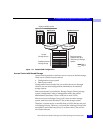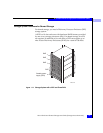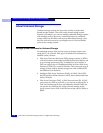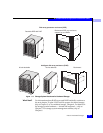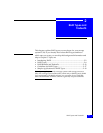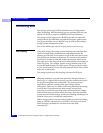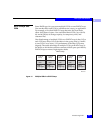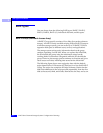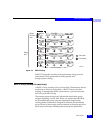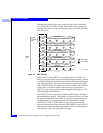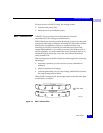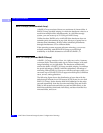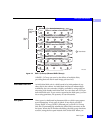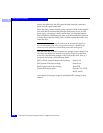
2
Introducing RAID
2-3
RAID Types and Tradeoffs
RAID Groups and
LUNs
Some RAID types let you create multiple LUNs on one RAID Group.
You can then allot each LUN to a different user, server, or application.
For example, a five-disk RAID 5 Group that uses 36-Gbyte disks
offers 144 Gbytes of space. You could bind three LUNs, say with 24,
60, and 60 Gbytes of storage capacity, for temporary, mail, and
customer files.
One disadvantage of multiple LUNs on a RAID Group is that I/O to
each LUN may affect I/O to the others in the group; that is, if traffic
to one LUN is very heavy, I/O performance with other LUNs may
degrade. The main advantage of multiple LUNs per RAID Group is
the ability to divide the enormous amount of disk space provided by
RAID Groups on newer, high-capacity disks.
Figure 2-1 Multiple LUNs in a RAID Group
EMC1814
RAID Group
Disk Disk Disk Disk Disk
LUN 0
temp
LUN 1
mail
LUN 2
customers
LUN 0
temp
LUN 1
mail
LUN 2
customers
LUN 0
temp
LUN 1
mail
LUN 2
customers
LUN 0
temp
LUN 1
mail
LUN 2
customers
LUN 0
temp
LUN 1
mail
LUN 2
customers



